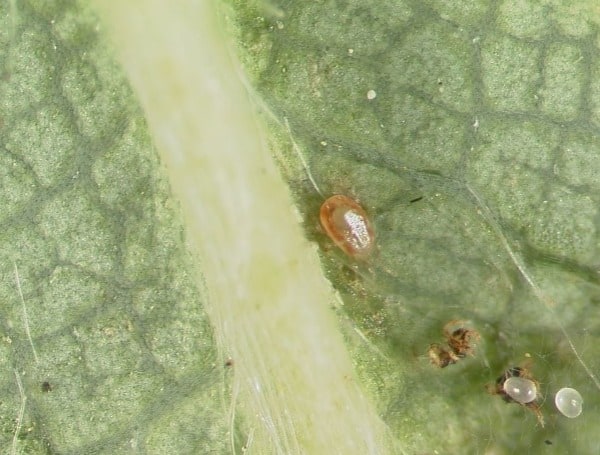Artificial intelligence that might use smartphone images could lead to more accurate, early detection of a pest that ruins strawberries, a $300 million-dollar-a-year industry in Florida.
University of Florida scientists have developed a smartphone app to detect the twospotted spider mite. With quicker detection, the system would let farmers use lower levels of chemicals that might otherwise harm the environment. As it stands, most growers spray regularly, perhaps as often as every week.
“The twospotted spider mite is one of the major pest problems in strawberry production, and its manual detection is labor-intensive and time-consuming,” said Daniel Lee, the lead researcher on the project that is funded by a $491,000 grant received in 2019 from the National Institute of Food and Agriculture. “Since everybody has a smartphone, we thought we could develop an automated way to detect twospotted spider mites, using a smartphone and artificial intelligence.”
The technology is still two to three years from being usable by farmers, said Lee, a UF/IFAS professor of agricultural and biological engineering. For now, scientists are fine-tuning the technology.
UF/IFAS researchers are investigating whether a smartphone will work to identify mites. If they find that method works, farmers will magnify images as they take pictures of strawberry leaves, said Lee.
Then, they label images to train deep learning networks, a form of artificial intelligence, to recognize the mites. Once the networks are trained, they can be used to identify the pests.
Additionally, because every smartphone has a different camera and computing capabilities, scientists are thinking about creating a “detection box” that would consist of an independent camera and computing board, instead of a smartphone, Lee said.
Thus far, researchers have successfully tested an algorithm to detect mites using a smartphone. But that’s very preliminary data, and it will take at least two to three years before they know for sure if the technology works.
Either method would give growers an automated system to count the mites, replacing the current, manual counting system.
Twospotted spider mites are a mighty destructive pest, causing $28 million to $34 million of damage on Florida crops annually, said Oscar Liburd, a UF/IFAS professor of entomology and a co-investigator on Lee’s research team. It costs between $3 million and $5 million and can be even more if the grower’s management system is set up on a weekly basis, Liburd said.
Liburd gives a single-farm example. For a 50-acre farm, every time the grower does not spray reduces production costs by $4,000 to $5,000, depending on the chemical you use. This translates to environmental benefits as well. It’s hard to quantify natural resource preservation into dollar figures, but pesticides that kills mites can harm beneficial insects, such as pollinators, and can contaminate ground water, Liburd said.
“The ability to do surveillance on the twospotted spider mite population, using smartphone technology, will improve monitoring efficiency,” Liburd said. “The use of smartphones will significantly reduce the frequency of sprays since growers will only be spraying when mites are present.”
In the NIFA-funded project, researchers from the University of California are also developing technology to speed up the process of identifying twospotted spider mites in nuts.
Other News: AI May Help UF Researchers Identify Crop-Destroying Nematodes

